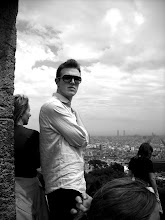
Gaga's new video has been on the air for less than an hour and "LADY GAGA OFFENSIVE VIDEO" headlines are already flowing like the freshly spilt tears of Pope Benedict XVI.
When something is offensive it must provoke and upset not by default but by intent, so do not mistake Lady Gaga and Steven Klein as accidentally ruffling the alms-paid-for feathers of the Catholic church. In a perfect world, or just an educated world, the word "offensive" would never coincide with a comment about art. Art is supposed to be offensive and I dare anyone to name a piece of art, whether a play or a song or a sculpture made of discarded placenta, that gave a distinct emotional impression without provocation.
But controversy aside, the video is just okay. Which, in the context of the video's pop cultural importance, is a fairly brutal criticism. "Alejandro" is, after all, a much-anticipated collaboration between one of the most talented American photographers and the most exciting musician in the world as of 2010 and yet, there isn't much of a story or even anything remotely pleasurable to look at. What I saw was a dark, unsurprising collage of interesting (but ultimately--and this is the worst part--pointless) imagery that would be better suited for the centerfold of W or Arena and not reeled into a projector and placed onscreen.

There are a few amazing moments. Near the end of the video, with Gaga standing alone in what seems like the demure outfit your salsa instructor would wear at any small-town ballet studio, there are sparks of real inspiration. Marching and snapping her alabaster fingers, she is defiant and beautiful. The following dance sequence is another strong moment, and the story of the track itself--modern women, the struggle and judgement of society towards homosexual men, and the torturous relationships between these entities--becomes at least somewhat apparent. With her gay soldiers marching at her side, preparing for their incoming battle against the brilliant critiques of Bill O'Reilly and Glenn Beck, she transcends her human body as Lady Gaga and, in a move that is becoming increasingly easy for her, transforms into a kind of religious icon, an image of something otherworldly. The video ends with her being obsessively disrobed and tossed about, finally exposing her breasts to her acolytes. This is disturbing, but fame is disturbing, and when interpreted this way, the lyrics of "Alejandro" seem disturbing.
Hopefully her next effort, for "Monster" I presume, will be more original. Gaga's already worshiped, but pop-cultural holiness requires a few miracles now and then.
And, as a big fan of Steven Klein, I couldn't help but notice the similarities between the video and a past shoot of Klein's for French Vogue in 2009, picture below. Even the haircuts on the male dancers are identical. Copying your art for the Queen of Pop? Now that's "offensive."





